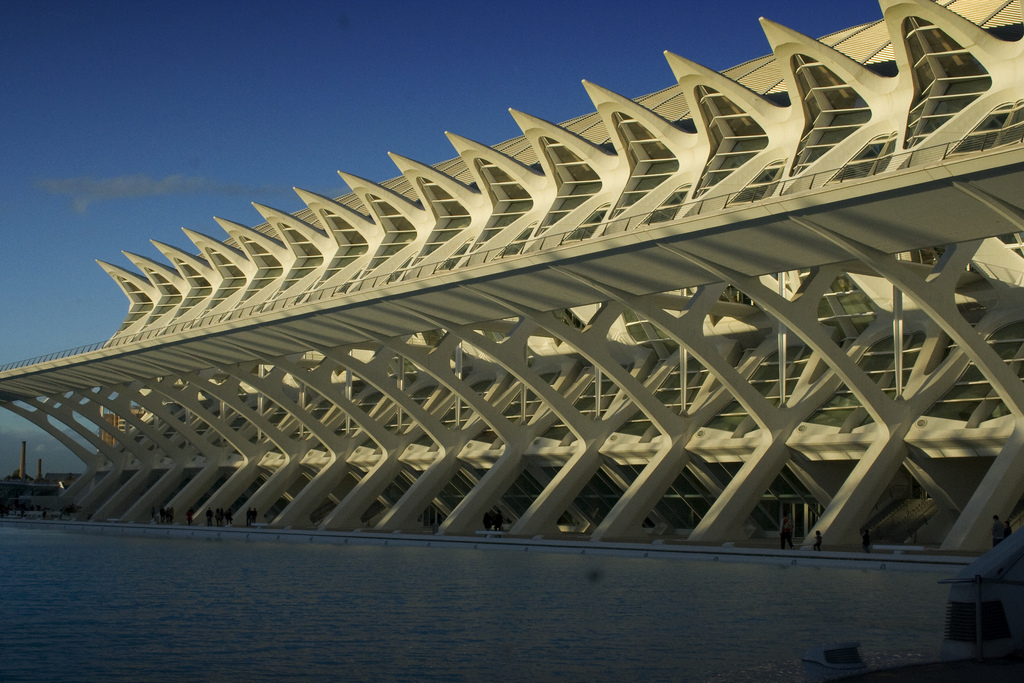Sunday, February 23, 2014
Romanesque v. Gothic Architechture
Here is a short video about some of the primary differences about the Romanesque and Gothic architectural styles. Take a look if you are interested and let me know what you think.
The guy talks in a British accent, so that's fun.
Gothic
The Gargoyle
Originating during the Gothic period, the Gargoyle is a primary common feature among buildings from the period.
An important note however is that a true "gargoyle" from this period serves a greater function over its ornamental qualities.
Roughly translated in English to mean "Throat or Gullet" the gargoyle serves as a spout, a pathway for water to drain from the building. Although highly artistic, their main purpose is in fact function over form.

Chimera
Chimera however, is the name for a gargoyle like figure that is strictly ornamental; used to ward off evil spirits and protect the buildings that they guard.

Ribbed Vault
Another primary feature that can be seen among buildings from the Gothic Period would be the Ribbed Vault. A variation of the barrel vault, the Ribbed Vault was characterized by its beam like structures, or "ribs" that create a web like pattern overhead.
Believed to create a sense of weightlessness,drawing the eyes upward, the Ribbed vaults help to place the Gothic cathedrals in a higher state of holy; invoking a sense of a heavenly presence. A great improvement from the strong, heavy, grounded Romanesque arches.


The Now:
Islamic Style
Islamic Design
The Taj Mahal
Standing at a surprisingly minimal 240 ft, the central dome of the Taj Mahal towers over its vast memorial complex. Constructed by Ustad Ahmad Lahauri, "the Taj" - as it is reffered - was built as a memorial tomb for his third wife Mumtaz Mahal. Built to be the grandest construction ever made by man, the Taj Mahal seems a suitable name; directly translating to the phrase "Crown of Palaces.
The Construction:
The Taj was mainly adorned with white marble, however, it was in fact built with many materials from all over India and Asia. The erecting of the structure was such a large undertaking in fact, that the scaffolding used during its construction was practically a monument all its own. A large brick structure that foreman suspected would take years to dismantle after the Taj's completion.
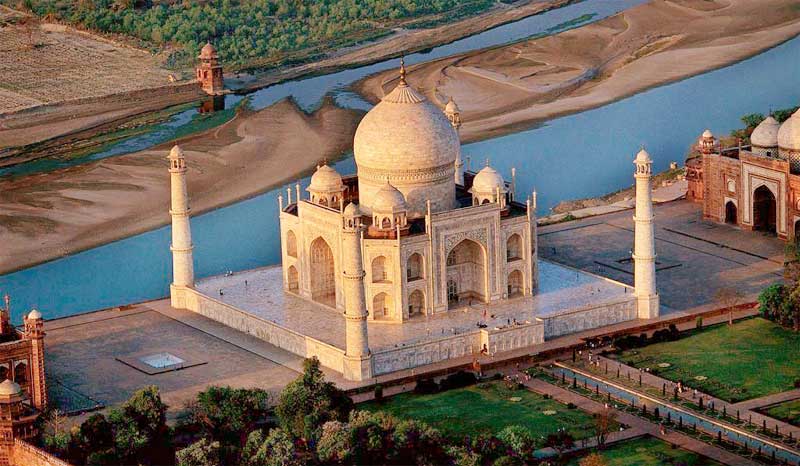

Nearly 1000 elephants were used to carry building materials to the site from across India. Equally the construction required a nearly 20,000 man workforce. Sculptors, Inlayers, Stone Cutters, and Engravers from across India were given the task of erecting this massive, and beautiful structure.
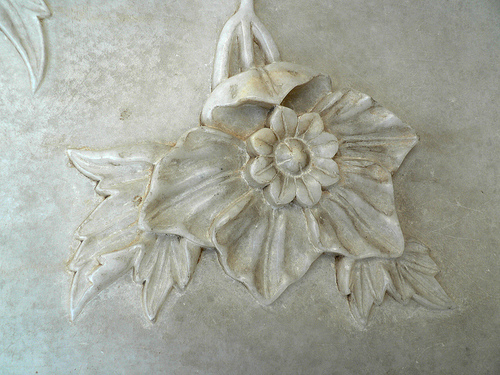

Modern Day:
Saturday, February 22, 2014
Romanesque Doorway of the church of Sant Vicenç in Malla (+playlist)
Here is a short video about a partially reconstructed doorway from the Romanesque period. You will notice the obvious circular vault, along with religious motifs.
Romanesque
Romanesque: "In the Manner of the Romans"
Millennium of the Apocalypse:
"For nearly 1000 years after Christs death, very few structures were built because of the promise of Christs return." This is absolutely my favorite fact in this section. I feel that it really breathes life into the people of the time. Being able to relate with their thought process. It is very "human" to not waste time and energy. However, when Jesus did in fact not return as quickly as people had assumed, greater effort was put into erecting places of worship. In fact, after Charlemagne was crowned Emperor of the Roman Empire in A.D. 800, there was a BOOMING need for new religious structures. Charlemagne encouraged the pursuit of knowledge as well as the preservation of the arts. Thus, a boom in religious construction began. and with it, the Romanesque style.



Most of these new churches had some new "improvements".
- Larger, to hold more people
- Many large isles and windows to allow for greater illumination
- Addition of a choir
Truly grand examples of religious importance in this time period.
.jpg)
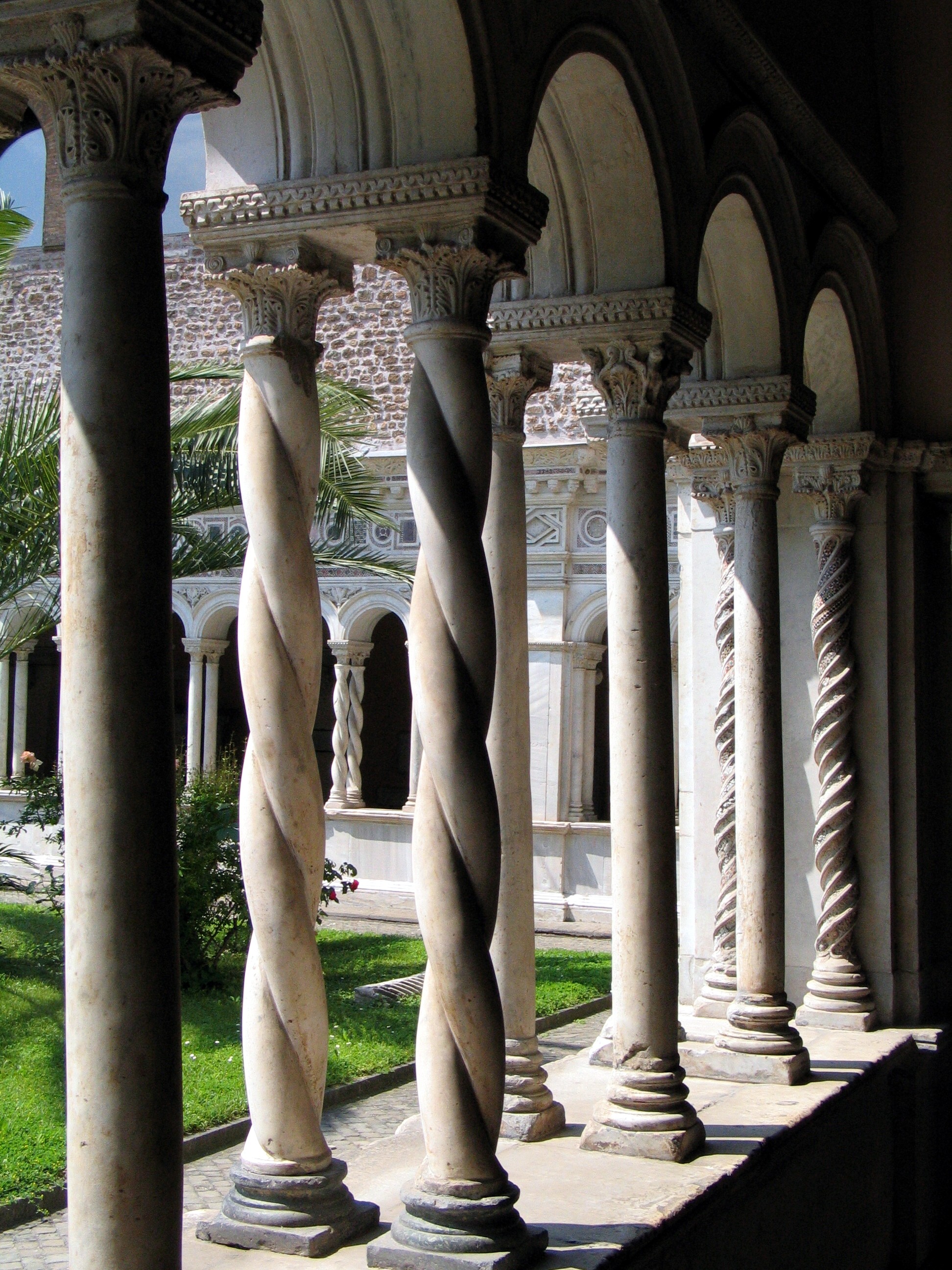
You will notice that the majority of what defines Romanesque Architecture lies within the tall, sturdy construction of the buildings; along with its round arches and tall towers.
Pulling much of its style from the Ancient Roman and Byzantine styles.
The Now
Much of modern day Romanesque style focuses on those same qualities. Emphasis on the use of round arches and large towers.
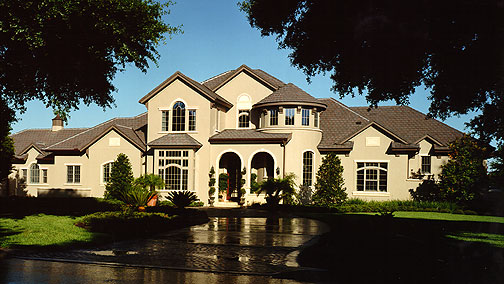

Wednesday, February 12, 2014
Student Discussions
Student Discussions:
Classical Civilization - Egypt:
The first post I viewed was Ali's. She spoke a lot about how we can interpret and witness history through the Egyptian paintings and artifacts we have discovered. What I find all the more remarkable is the fact that these things are even still around for us to see them! Truly a testament to the Egyptian people. And it really makes me wonder, will anything from our era withstand a similar test of time.
The second post I viewed was Ariana's. What really stuck out to me about her post was how she connected modern day "stereotypes" of Egyptian culture with the truth. Although we often consider Ancient Egyptian royalty to sit on lavish golden thrones, the fact is... they didn't. Their furniture (although beautiful) is quite plain when compared to our perceptions.
The second post I viewed was Ariana's. What really stuck out to me about her post was how she connected modern day "stereotypes" of Egyptian culture with the truth. Although we often consider Ancient Egyptian royalty to sit on lavish golden thrones, the fact is... they didn't. Their furniture (although beautiful) is quite plain when compared to our perceptions.
Classical Civilization- Greece:
Chanel made an interesting point about the lifestyles and furniture of the Grecian people. Similarly to the space saving lifestyles that are becoming more and more popular in today society, the people of Ancient Greece had similar values in their furniture and lifestyles. Often using surfaces as both beds and tables. As well as ensuring that their tables were in fact portable.
In Dana's post, I easily related to her interest with the impluviums used to collect rain water. Now obviously, rain falls... everywhere... however, the people of Ancient Greece saw value in having rain collection capabilities within their home. Why not just have a collection area outside? Why go through the effort? Very curious and interest aspect of Ancient Grecian life in my opinion.
Classical Civilization - Rome:
Something that I really pulled away from Emily's blog was the word "risk". Roman society was all about risk, from their conquest to their structures; everything they did was constantly pushing the boundaries of what is achievable. Truly setting a standard for what it means to be a powerful society.
The second blog I viewed was Hannah's. The very first thing that she wrote was about the woman gladiators of the time. Now this was something that I had never considered before. Most of what I have learned about Roman era woman portray them as soft, delicate examples of "beauty". However the image of the Women gladiators clearly shows women influence reaching far further than the walls of their home.
Early Christian:
The hard hitting point that i pulled out of Jessica's post is the shear power that faith can have over a person. After Constantine's legalization of Christianity, places of worship began to flourish. Massive structures were built for no other reason other than to come and worship a god that cannot be seen nor heard. All through faith were these structures created. I just find that to be remarkably powerful.
Justine made a great point about Christian furniture. more often, the most ornate pieces were not meant for someone to sit on or use directly; rather, the most intricate and thoughtful pieces were purposed for displaying or storing.
Byzantine:
Pompeii:
I first viewed Dana's post. I was really drawn to the "current applications" section where modern artists have taken styles and textures from Pompeii and incorporated them into modern uses. Most impressed however by the bookshelf and its impression of mosaic tiling using positive and negative space.
The second post I viewed was from Kristina. I think that her real world experiences with the area really brought the place to life. It was neat to hear how she was able to directly connect the old styles with what she saw in the new.
Romanesque:
Justine had a very well put together post about the Romanesque period. She incorporated many of the same facts as I did, touching on the primary differences and changes from the churches of the previous era. One thing that I felt was very important that she mentioned was that common homes were most often made of mud, dirt, and twigs; compared to the strong, beautiful churches that were being created.This shows a great importance in religion during this time.I was fascinated by the folding chair in Katies blog; the Throne of Dagobert. It is astounding to me that such intricate detail would be put into the mechanics of a chair during this time. Rather than putting effort into the ornateness or the detail of the chair, it is instead made interesting by its unique x frame folding design.
Islamic:
Kristina P has a very well organized blog that is very easily navigated. My favorite image that she has from the Islamic period would be the picture of all of the people praying while facing mecca. A very great depiction of the purpose of Islamic design; primarily religious design intended to assist with worship.In Kristinas Islamic blog, her images of the modern day uses of the Islamic patterns I think gives a great representation of the styles and colors that are most often used. Blues, Oranges, Whites; light tones, a very bright contrast to the darker heavier tones that you may find in the churches of Romanesque or Gothic churches.
Gothic:
Lindsay's blog was very unique because she has first hand experience, seeing the real beauty of Gothic style structures. I envy her experiences and was really interested about what she had to say about her time abroadSomething that I did not do in my Gothic post was touch on the black plague. Megan however mentioned that nearly 75 million people died during this time period. A truly staggering number only intensified when contrasted with the beauty that is found in the Gothic style of architecture from this time period.
The Americas:
The first blog that I viewed was from Yo. The thing that I found most striking about his entry was the photo of the wooden sculptures that have been found dating back to the Olmec civilization. It is so amazing to me that something so easily destroyed has been preserved so well that it can be seen today, not only with definite shapes and forms, but with expressions as well.
The second blog that I viewed was done by Natalie. Although everything in her blog was very well done, the one thing that stuck out to me the most was the simple fact about Teotihuacan's lack of walls of barricades. Generally we considered heavily guarded civilizations to be powerful and strong; however true power lies with the civilizations that have no one else contesting them. And I just think that that is pretty cool.
The second blog that I viewed was done by Natalie. Although everything in her blog was very well done, the one thing that stuck out to me the most was the simple fact about Teotihuacan's lack of walls of barricades. Generally we considered heavily guarded civilizations to be powerful and strong; however true power lies with the civilizations that have no one else contesting them. And I just think that that is pretty cool.
Italian Renaissance:
The first post I viewed was from Megan, she really delved deep into the inner workings of a palazzo, the purpose of the different rooms and how the building as a whole was used.Sam wrote a fair amount about the origins of the Italian renaissance, the Medici Family, as well as the influence that Brunelleschi had over the whole period from the loggia of the orphanage of the Foudling hospital, to the discovery of linear perspective.
Spanish Renaissance:
French Renaissance:
English Renaissance:
American Period:
Victorian Period:
Saturday, February 8, 2014
Pompeii: The Mystery Of People Frozen In Time - History Documentary
The video is a tad long. However it is full of wealthy knowledge about the era and its demise. Take a look if you are interested.
Pompeii
Pompeii:
The Time Capsule:
Pompeii is a city of ancient Rome that was once home to nearly 2o,ooo people. In 79 A.D. however, the city was literally engulfed in volcanic ash from the nearby Mt. Vesuvius volcano. Buried under around twenty ft of volcanic ash, locked away from air and moisture; this ancient city remains to this day just as it was nearly 2,ooo years ago.


Everything from structures, animals, and human beings can still be found to this day; now plaster casts of what they once were.




Excavators would fill the empty voids (left by human remains) with plaster before slowly removing the layers and layers of ash revealing the plaster casts.
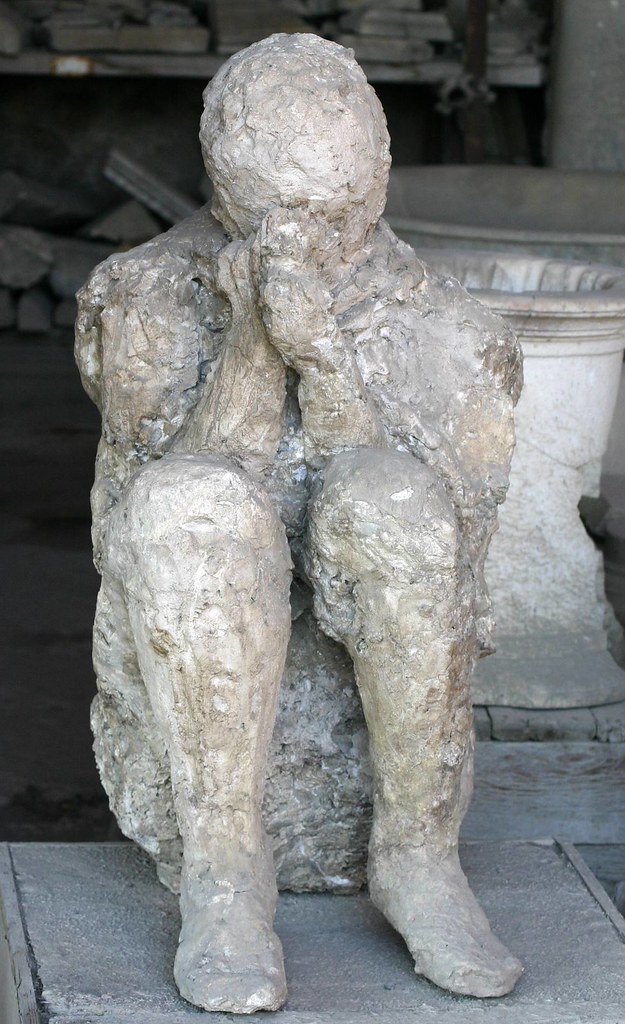

Body position, stature, and in some cases even expression can be seen on the plaster faces of these ancient people.




Sunday, February 2, 2014
Early Christian
Early Christian
The Catacombs
What I find so fascinating about the catacombs is that they are much more than just a burial site. Rather, the catacombs have been many things over the course of history. Originally purposed as religious burial tunnels, the subterranean underworld would soon hold multitudes of people from soldiers, smugglers, and even the homeless. More importantly however would be their use today, that being a time capsule of many many generations, layers and layers of people and information from which we can learn from and experience the Early Christian period.


The Faith
Today, Christianity has a great number of offshoots and branches. Each with their own idealism and minor changes. However, they all stem back to the belief that Jesus Christ walked among the earth and gave his life to save man from his sins. Many of the same symbols and metaphors still remain to this day from the period.

Subscribe to:
Comments (Atom)



